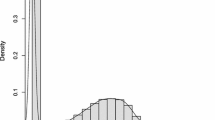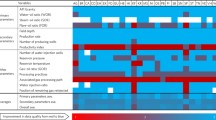Abstract
Most economic theories are wrong. Fortunately, most wrong theories are irrelevant. But some wrong theories are relevant. One of these latter theories is Marion King Hubbert’s peak oil theory, postulated in 1956. Hubbert was a geologist who thought that oil exploration is an uncertain undertaking. Frequently, drilling is en vain; in a few cases, gas is discovered and in another few cases oil. Given uncertainty, only proven reserves are said to be reliable. Proven reserves appear as a peak in the known graphs. In lucky times, we find ourselves on the ascending part of the bell-shaped curve. In less favorable times, we slip downward on the descending part of Hubbert’s peak. Oil reserves dwindle and might come to an end. Hubbert’s peak oil theory is still popular, but doubly false: It predicts crises which do not occur and misses to handle crises which occur.
Access provided by CONRICYT-eBooks. Download chapter PDF
Similar content being viewed by others
Keywords
These keywords were added by machine and not by the authors. This process is experimental and the keywords may be updated as the learning algorithm improves.
“Peak oil” theory is driven by thinking in dependencies, not in exchange: It predicts crises which do not occur and misses to handle crises which occur. Time to let it go.
Most economic theories are wrong. Fortunately, most wrong theories are irrelevant. But some wrong theories are relevant. One of these latter theories is Marion King Hubbert’s peak oil theory, postulated in 1956. Hubbert was a geologist who thought that oil exploration is an uncertain undertaking. Frequently, drilling is en vain; in a few cases, gas is discovered and in another few cases oil. Given uncertainty, only proven reserves are said to be reliable. Proven reserves appear as a peak in the known graphs. In lucky times, we find ourselves on the ascending part of the bell-shaped curve. In less favorable times, we slip downward on the descending part of Hubbert’s peak. Oil reserves dwindle and might come to an end. Hubbert’s peak oil theory is still popular, but doubly false: It predicts crises which do not occur and misses to handle crises which occur.
On the one hand, scientists have regularly made projections in application of Hubbert’s peak oil theory which never materialized. In 2008, the renowned geologist and Stanford professor Gilbert Masters concluded that: “It’s About Forty Years Until the Oil Runs Out.” In 2004, Claudia Kemfert, the chief energy economist of the German Institute of Economic Research, reported that the global oil reserves would last only for another 15 years [up to 2019]. Should she be wrong and oil will still be available in 2019, peak oil theorists will say to Little Red Riding Hood: “Be aware, not this time, but the next time the wolf will most certainly come.”
On the other hand, peak oil theory, as other theories, could not predict the OPEC oil embargo of 1973, but more importantly, it was unable to offer a solution on how to approach such an unexpected event. In his desperate search for a workable solution, President Nixon took action and imposed rationing by gasoline price ceilings in 1973–1974 which made an outgrown crisis out of the initial cutoff.
The lesson from the OPEC crisis is that crises occur where free market forces are restricted by state intervention. Different from the US government, the European governments reacted to the OPEC cutoff with laissez-faire. Prices rose for a while, but queues did not appear. The US government wanted to be smarter than the markets, but failed. Practice shows that oil companies apply a simple theory. In the short run, they maneuver their tankers toward places of scarcity, and they increase exploitation of existing oil wells. In the middle and long run, they intensify discovery at higher marginal costs as reserves are a function of oil price and technology. Therefore, Hubbert’s peak is shifting continuously to the right. It appears as a red line of successive peaks, not as a single peak. Apparently, the reserves to production ratio has increased only slowly reflecting oil companies’ expectations.
Were the US government to think in terms of costs of reserves, oil supply could be maintained at little marginal cost. But political scientists seem to have won the battle in consulting the US administration. They typically think in dependence and not in exchange. If Arab potentates are brought in dependence of US arms, then they might also maintain oil supply. Such an interpretation might explain the extraordinary arms delivery contracts of 1.3 billion USD between the USA and Saudi Arabia in 2015. For Little Red Riding Hood is taught: “Be sure, next time the wolf will come.”
Author information
Authors and Affiliations
Editor information
Editors and Affiliations
Rights and permissions
Copyright information
© 2017 Springer International Publishing AG
About this chapter
Cite this chapter
Blankart, C.B. (2017). Peak Oil Theory. In: Frey, B., Iselin, D. (eds) Economic Ideas You Should Forget. Springer, Cham. https://doi.org/10.1007/978-3-319-47458-8_10
Download citation
DOI: https://doi.org/10.1007/978-3-319-47458-8_10
Published:
Publisher Name: Springer, Cham
Print ISBN: 978-3-319-47457-1
Online ISBN: 978-3-319-47458-8
eBook Packages: Economics and FinanceEconomics and Finance (R0)




